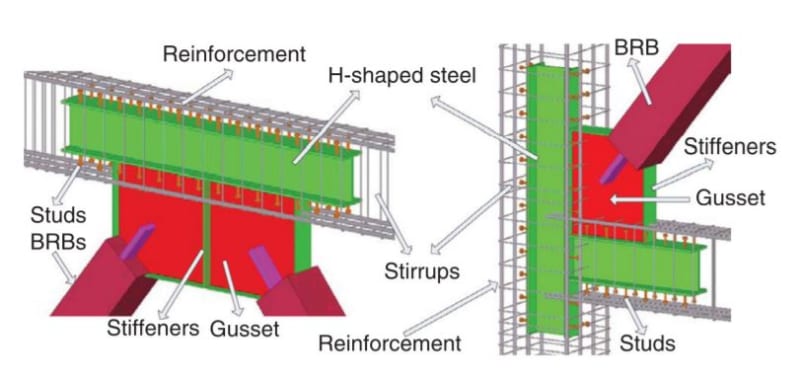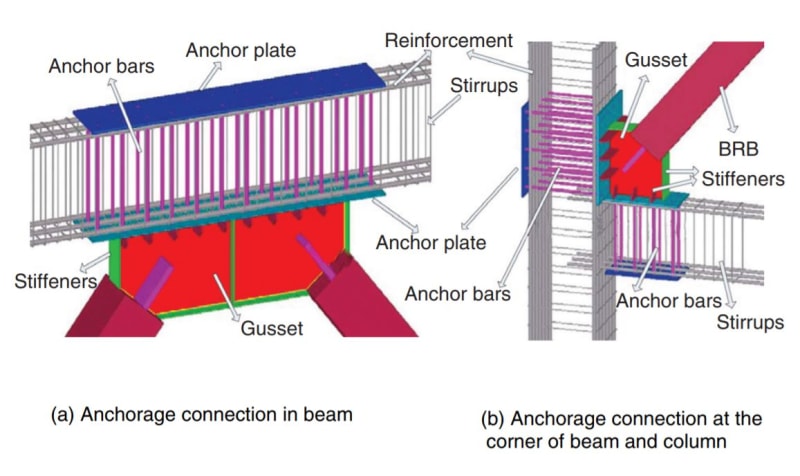Olivaw
Structural
- May 15, 2020
- 9
Im working on a 6 story plus 2 basements shear wall building on a high risk seimic area. Due to architectural concerns we can't add more walls on the first floor to resist the seismic load. So we came up with the idea to add a steel chevron brace on some concrete frames on the perimeter of the building to deal with those loads.
The thing is we have some problems on the connection between the braces and the concrete beams (see attached). I was planning on having some anchor bolts welded to a preinstaled steel plate but the connection fails through shear breakout (parallel to the
Ultimate shear through the connection is 692 kip (Im not from the US, I think those are used in the US right?). If I use 12 bolts then I have to account 58 kip per bolt. ACI 318 chapter 17 gives me 17.5 kip of shear breakout resistance per bolt, nowhere near enough resistance.
My only hope is to use supplementary reinforcement but I don't know where to place them since this situation is not your typical connection. Will concrete shear stirrups count as supplementary reinforcement per ACI 318?

The thing is we have some problems on the connection between the braces and the concrete beams (see attached). I was planning on having some anchor bolts welded to a preinstaled steel plate but the connection fails through shear breakout (parallel to the
Ultimate shear through the connection is 692 kip (Im not from the US, I think those are used in the US right?). If I use 12 bolts then I have to account 58 kip per bolt. ACI 318 chapter 17 gives me 17.5 kip of shear breakout resistance per bolt, nowhere near enough resistance.
My only hope is to use supplementary reinforcement but I don't know where to place them since this situation is not your typical connection. Will concrete shear stirrups count as supplementary reinforcement per ACI 318?




